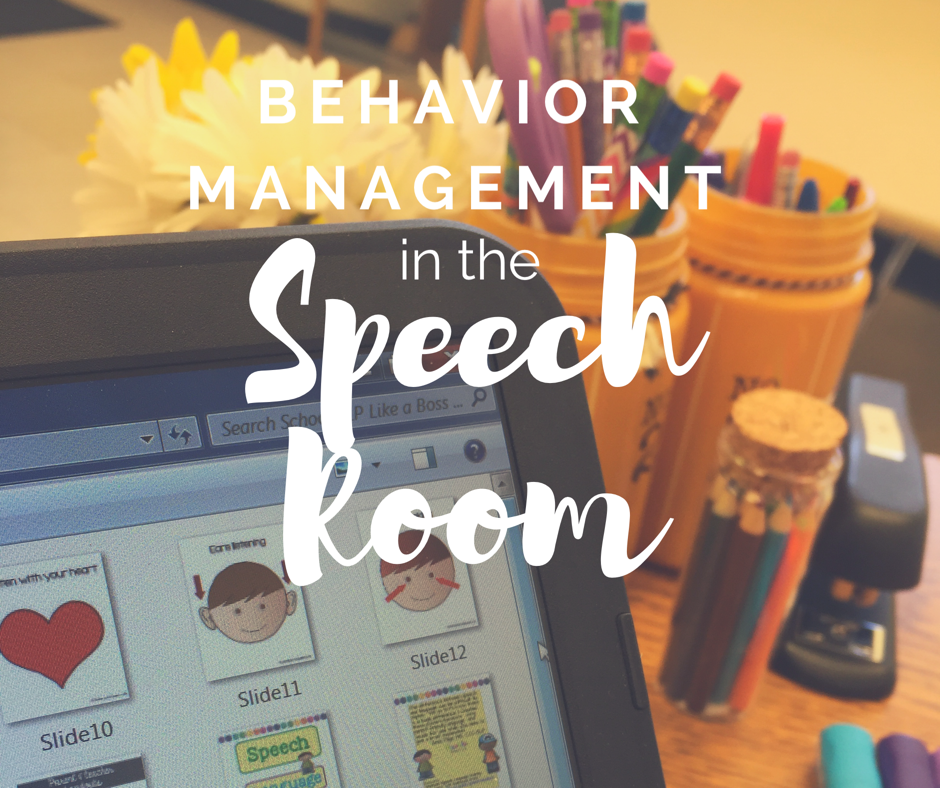
by Anne Page | Sep 6, 2016 | Quick Therapy Tips for the SLP and SLPA, SLP Like a Boss, Uncategorized
How do you deal with behavior issues? Behavior Management for the SLP is so important. I know when I have groups of busy, excited, talkative students sometimes they don’t automatically do what I want them too.[spacer height=”20px”]
I don’t want to spend my whole session dealing with behavior. Pretty sure you don’t either. But the reality is, many times you will have to teach students how you want them to behave.[spacer height=”20px” id=”2″]
Have you got four minutes to help you manage behavior in your speech room? That’s all the time it takes to read these tips on using visuals and routines to set-up and maintain good listening behaviors in your students. The listening visuals are included as handouts in the FREE School SLP Like a Boss Smart Start Kit. (If you don’t have it yet, no worries, just click on the pink rectangle below)[spacer height=”20px”]
Today I want to give you a quick read (seriously less than 5 minutes) giving you an idea of how you might want to use the behavior handouts in your speech room. The tools I use for classroom behavior management are included in the kit: listening posters and whole brain posters. These visuals are a life-saver, they serve as a constant reminder and have the added bonus of being easier for our language impaired students to understand. (Sometimes you know they’re just hearing our words sound like “blah blah blah”).[spacer height=”20px”]
It’s important to set expectations from the very beginning. By this I don’t mean just pointing to the posters once. Now’s the time to teach the meaning of the posters and foster a group connection. For example tell them, “In the speech room we are good listeners. We listen with our heart, our eyes, our ears, our mouth and our bodies.” You are giving them specific information so they know exactly what you want from them. Much more clear than “you need to be a good listener”[spacer height=”20px”]
Here’s what you need to get started:[spacer height=”20px”]
Listening Posters (pgs 10-15)
Print and laminate these posters. Place them where your students can see them from your therapy table. These are great for the primary grades.[spacer height=”20px”]
Explain each poster. For example: “This is what we need to do to be a good listener.” Point to each picture, read caption and demonstrate. Have the students show their eyes looking, ears listening, etc. After you go through all the posters, have students say them with you as you point and show you again. This is so worth taking the time to do. Remember you want to set them up for success. [spacer height=”20px”]
As you go through an activity, catch your students doing the right thing. Don’t wait until you have to say “where are your looking eyes?”. Give some positive feedback. “I like how Johnny’s eyes are looking right at me. I know he’s listening.” Kids need ten positive statements to every negative. Positive praise helps children become more aware of what they’re doing well, and more excited to continue trying. [spacer height=”20px”]
Make your feedback specific. It’s so easy to just say “good job”. But when we give specific praise, students know exactly what they are doing right and why you are happy about it. So instead of “great job”,try, “You are sitting quietly and looking at me, I know that you are learning”.
When you do need to give a verbal reminder to get the behavior you want, point to the poster while you say “Remember, mouth quiet”. And then fade the verbal prompts and just point.[spacer height=”20px”]
Whole Brain Teaching
I also have had really great success with the Whole Brain Teaching posters. I use these to give my busy little friends a routine to follow right when they come into the room. As soon as they sit down, we go through each rule. This is really fun and kind of bonding. Once they learn them, I let a different student be the leader each time. I use these with primary students. But you can use them with older students too. You just need to have different posters and a more age appropriate way to say the rules and make the motions.[spacer height=”20px”]
Go to the FREE Whole Brain link on page 9 in your School SLP Like a Boss Smart Start kit. Print and laminate the Whole Brain Posters. Click on the video link to see an example of how they are used. [spacer height=”20px”]
I hope these tips have you on your way to great behavior management. Following these will help you foster better relationships with your students and help them feel secure knowing exactly what the speech room boundaries and expectations are.[spacer height=”20px”]
You’ve got this,
Want to know more? Here’s what two amazing school SLP bloggers do for behavior management:[spacer height=”20px”]
Cheri from Super Power Speech shares some great tips on using visuals. Check out her blog post here. (Plus there is a great visual freebie)
Nicole Allison at Allison Speech Peeps wrote a really great article on how she uses Whole Brain Teaching during therapy.
Here’s a quick little article on ADHD and positive reinforcement
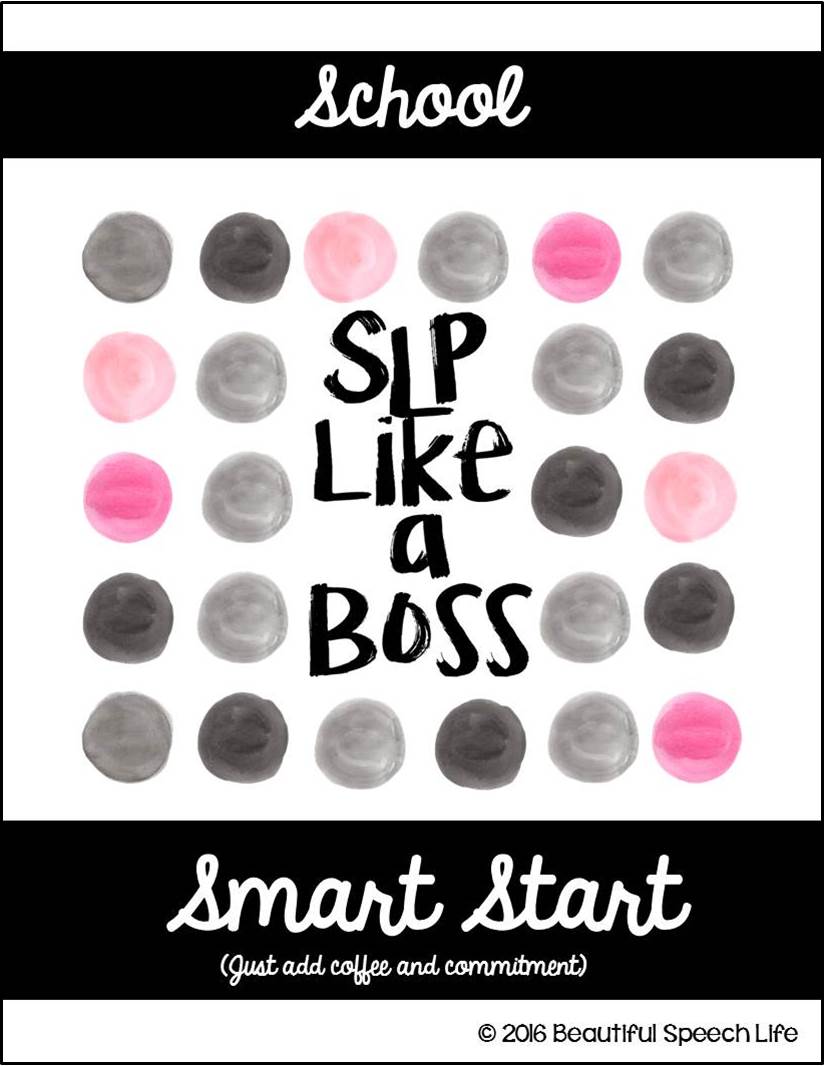
by Anne Page | Aug 21, 2016 | Freebies, SLP Like a Boss, SLP Time Hacks
Two weeks into the school year and already feeling a tiny bit overwhelmed?[spacer height=”10px” id=”2″]
It happens! With IEPs, evaluations, scheduling, team building and oh yeah, THERAPY, you’re probably wishing there were more hours in a day. Believe me, I’ve been there.[spacer height=”10px” id=”2″]
But, if you’ll remember, we’re working on building ourselves some systems; an SLP foundation that will provide an evergreen underlying structure. This way you don’t have to reinvent the wheel every year. You’ll feel calm and collected whether you’re walking into a meeting or walking into your therapy room.[spacer height=”10px” id=”2″]
That’s why I created the FREE School SLP Like a Boss Smart Start Kit. Using it will help you feel more organized and on top of your game in no time![spacer height=”10px” id=”2″]
This 62 page kit includes some super helpful resources that you’ll find yourself using year after year.[spacer height=”10px” id=”2″]
You might want to read this before you print anything. Let me walk you through the best way to use this step by step.[spacer height=”10px” id=”2″]
Step 1: Read Letter to a Young SLP-get inspired![spacer height=”10px” id=”2″]
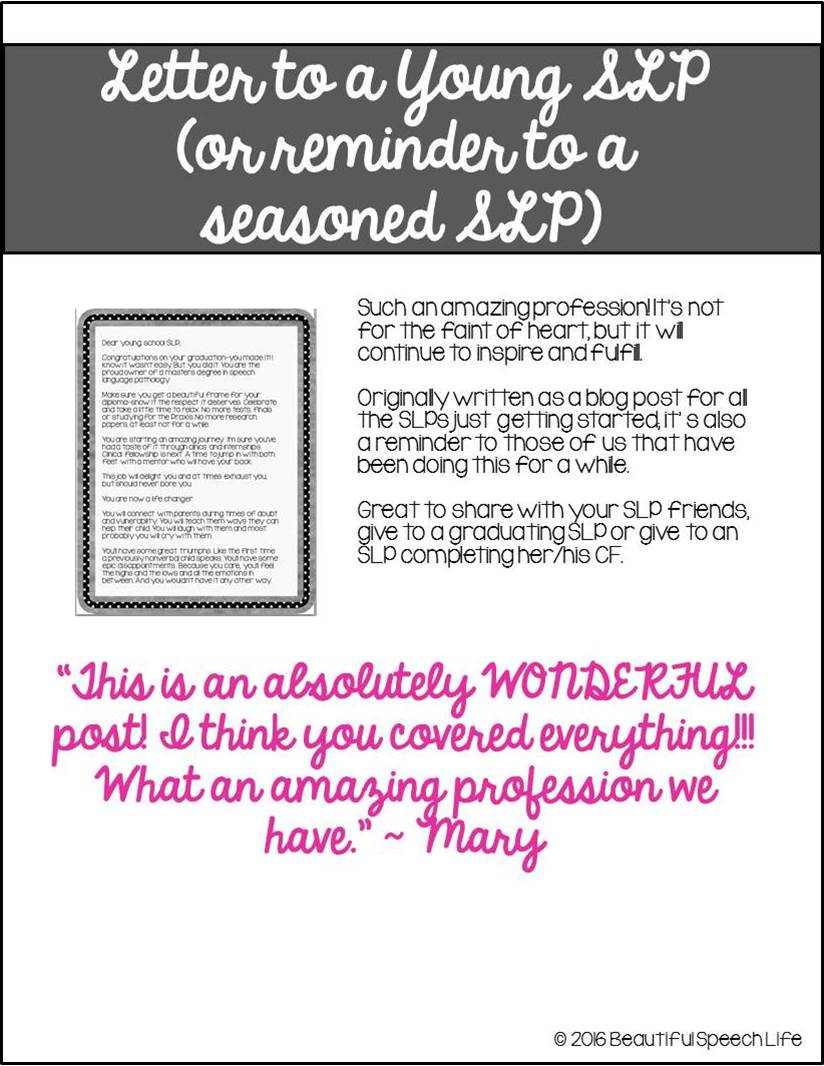
Step 2: Print Listening Posters: Print and laminate these posters. Place them where your students can see them from your therapy table. Explain them. For example: “This is what we need to do to be a good listener. Point to each picture, read caption and demonstrate. After you go through all the posters, have students say them with you as you point. (eg.”Eyes looking, ears listening, etc.”)[spacer height=”10px” id=”2″]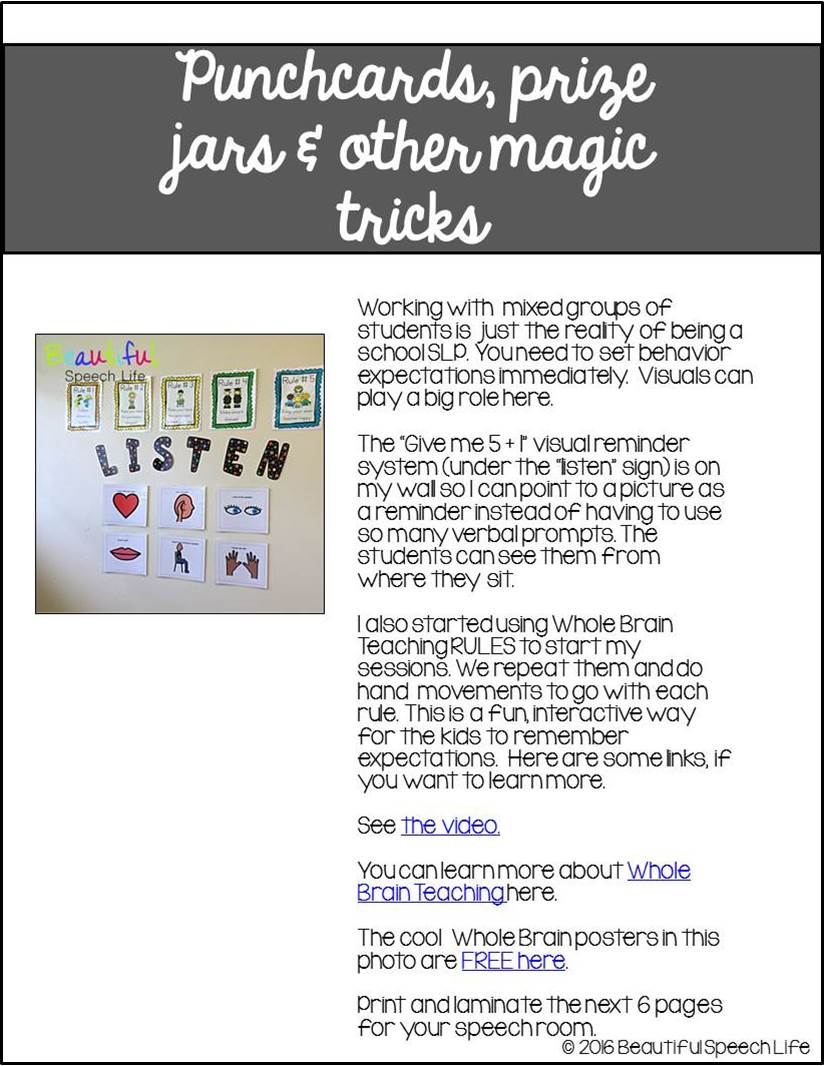
Step 3: Go to the FREE Whole Brain link on page 9. Print and laminate the Whole Brain Posters. Click on the video link to see an example of how they are used. I use these to start every session for my K-4 students. I still use it with my junior high functional skills class, we just do the movements in a more “adult-like” manner.[spacer height=”10px” id=”2″]
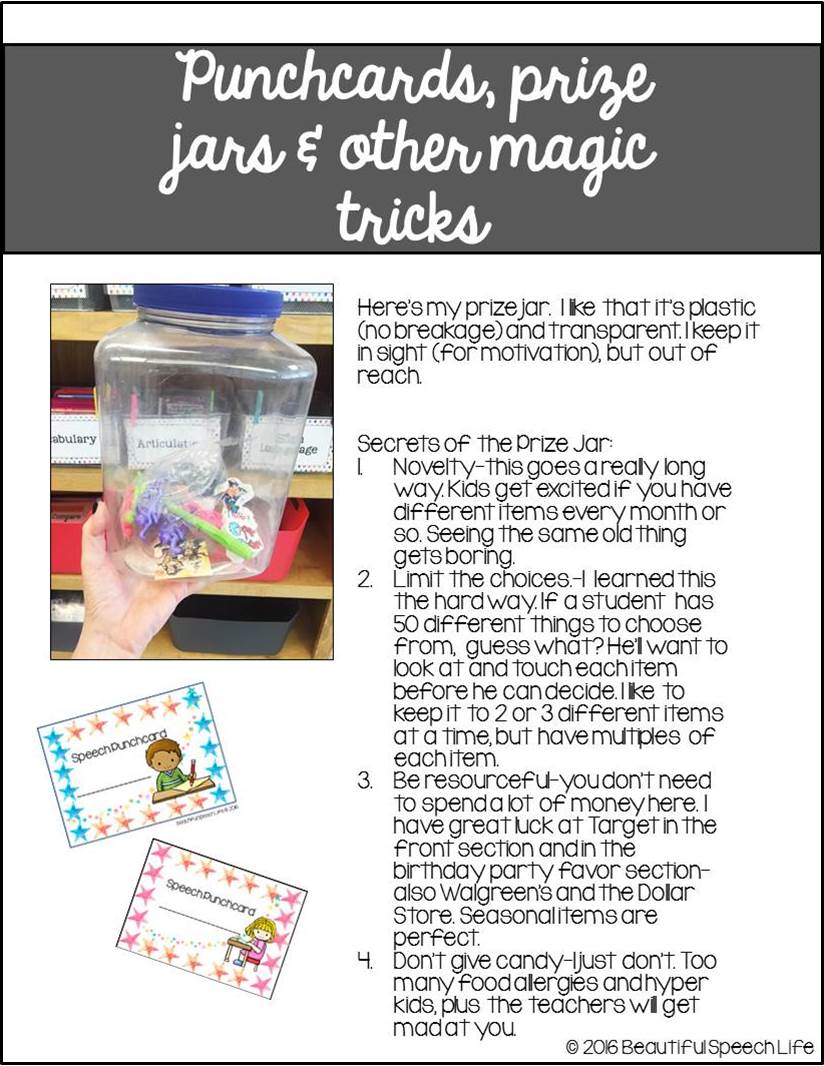
Step 4: Choose the Speech Punchcards you like and print them. Now, I use the color version because kids love colorful things. I also include a black and white version because of Murphy’s Law-color copiers are most likely to break, jam, or run low on ink when you just have 5 minutes to print something. These are such easy prep, just two cuts per page and you are ready to go. [spacer height=”10px” id=”2″]
Step 5: Get yourself a prize jar or box. Make a trip to Target and/or the Dollar Store for some cheap, fun prizes. Read my tips for how to keep it interesting on page 17.[spacer height=”10px” id=”2″]
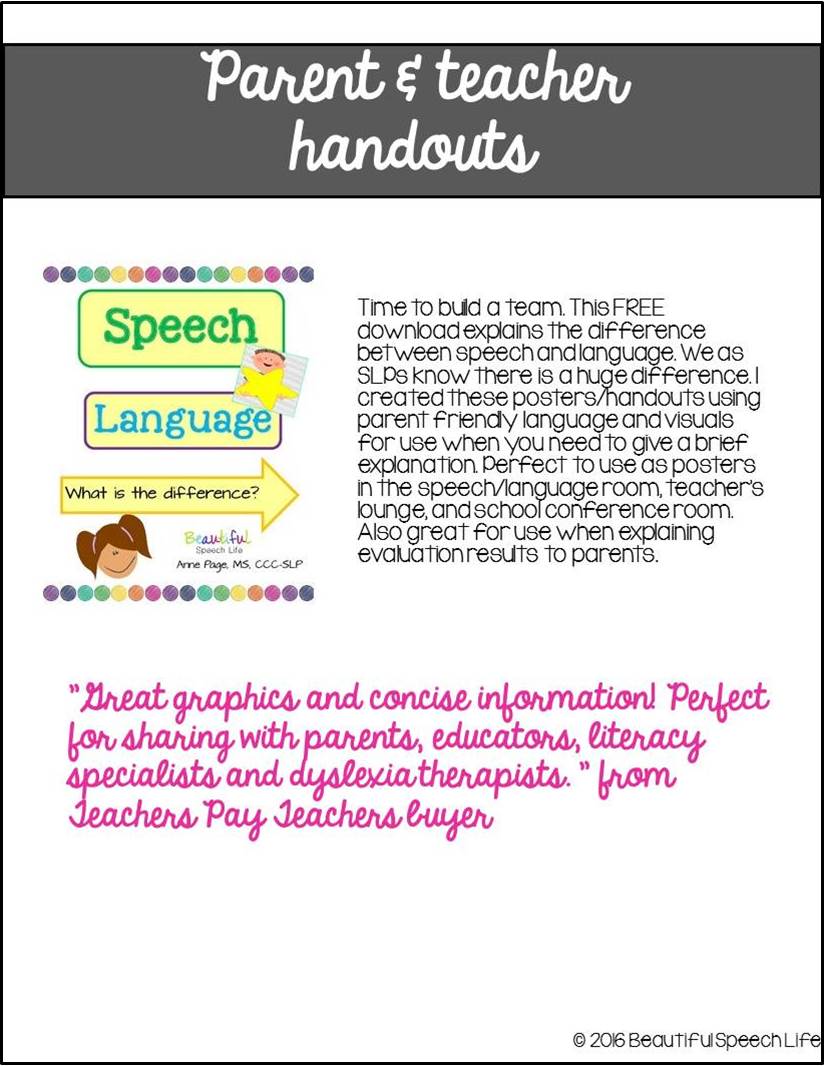
Step 6: Print the “Speech Language, What is the Difference?” posters. Decide where you want to put them. Some ideas are: speech room bulletin board, staff room, and conference room. They are also handy for parent teacher conferences, staff development days and evaluation meetings.[spacer height=”10px” id=”2″]

Step 7: Look through the parent teacher handout section. Choose some of the “What’s Speech got to do with Academics?” handouts to have on hand for IEP and eligibility meetings. These can be used as posters too. Bonus: I included on to use in May 2017 for Better Hearing and Speech Month. See?! Look how on top of the game you are already.[spacer height=”10px” id=”2″]

Step 8: Choose the Student Snapshots you like best. Print one for each student on your caseload, plus some extras to fill out as IEPs are reviewed and revised. (I just keep the extras in a file folder) Follow the instructions on page 32.[spacer height=”10px” id=”2″]

Step 9: Read through “But What Does it Mean? 10 Tips for Explaining Speech and Language Evaluations in Parent Friendly Language”. This is important stuff that will help you to make that all important connection with parents (a big part of being an SLP Boss). If you’re a paper person print it out.[spacer height=”10px” id=”2″]
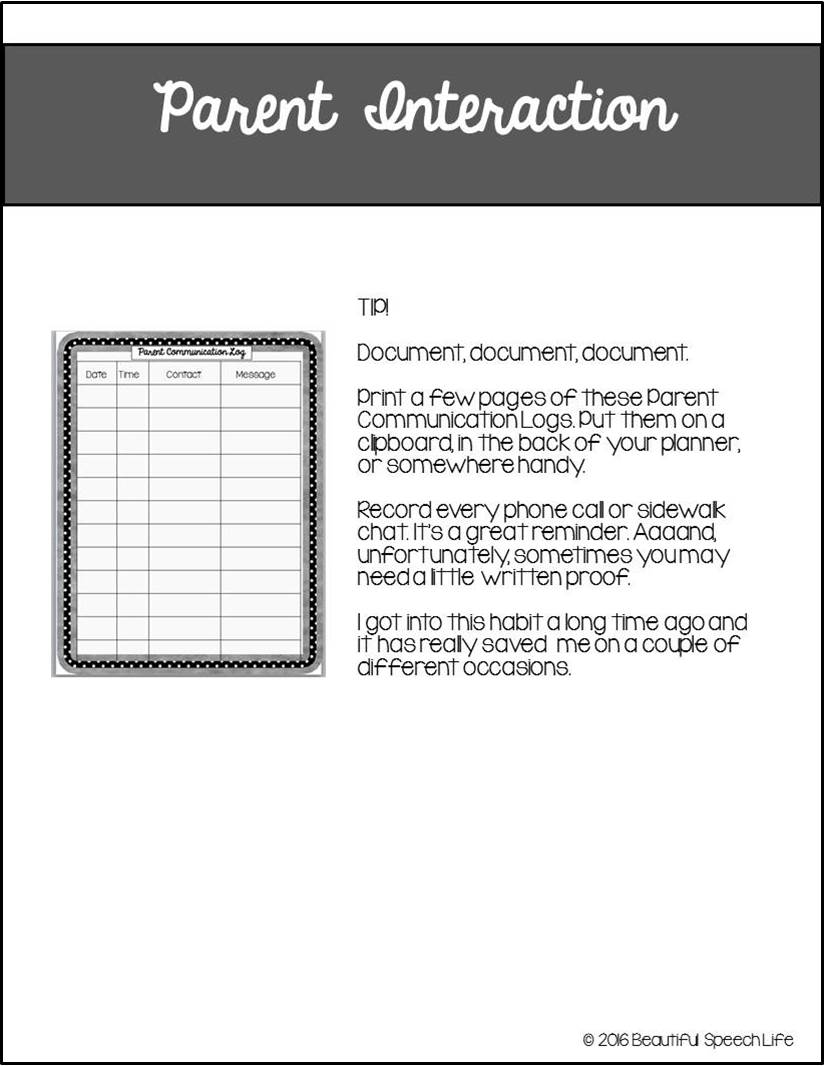
Step 10: Print 3 copies of the Parent Communication Log sheet of your choice. Use this all year. See instructions on page 51.[spacer height=”10px” id=”2″]

Step 11: Print and laminate testing sign.
Step 12: Print and frame (or laminate) you’re favorite SLP Like a Boss Poster. It’s my little present to you, a reminder that you’ve got this.[spacer height=”10px” id=”2″]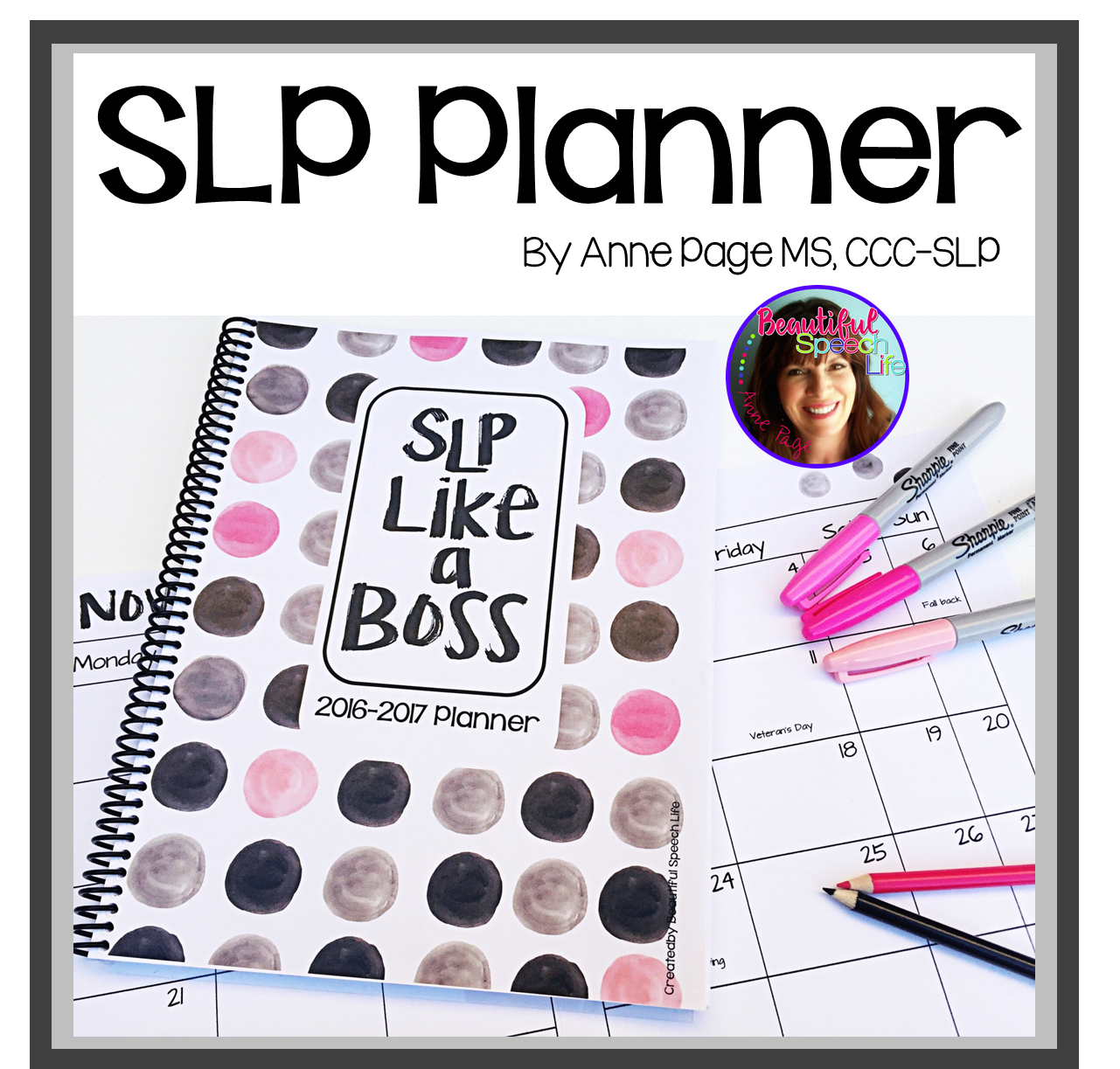
Step 13: Click this link if you need an SLP Planner. This planner is by my side all day. At the affordable price of $5.00, it is chock full of resources. The front cover is the only color page; the rest of the pages are black and white. You provide the color, because doodle borders and coloring pages are included. Yes, it’s true, I do love to color-that might be why I included these fun pages.[spacer height=”10px” id=”2″]
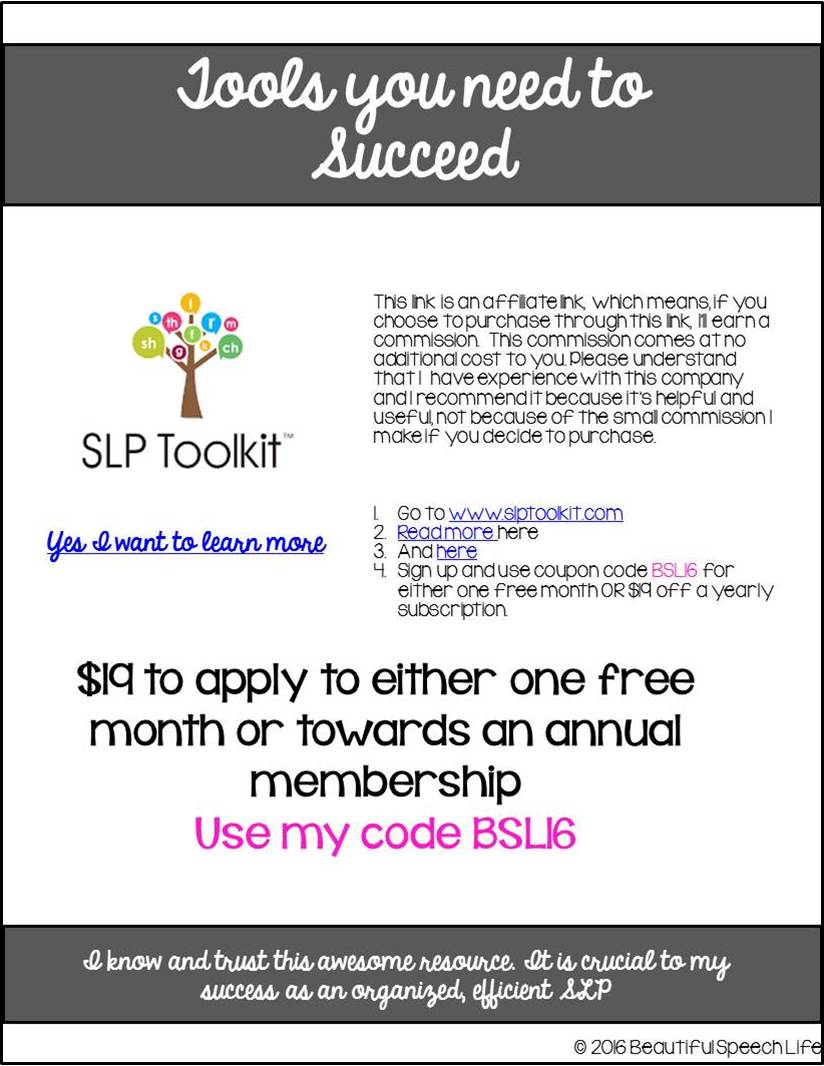
Step 14: This step can be a game changer. If you are really ready to up your game, have I got a tool for you. It is one of the most used tools in my bag of tricks! SLP Toolkit has saved me HOURS of work. Now I can easily assess present levels and give accurate, helpful progress reports. And the goal bank to-die-for! Go to pages 60 and 61 to read more about it. You can also click here and here to read the articles I wrote about SLP Toolkit.[spacer height=”10px” id=”2″]
So there you have it! Everything you need to feel more joy and less stress as you get your school year off to a brilliant start.[spacer height=”10px” id=”2″]
Click here to get your FREE copy.

ALL my best,


by Anne Page | Aug 9, 2016 | SLP Like a Boss
In this series I’m interviewing SLP boss women who work by day as a speech language pathologist, but at night (and on weekends) they are building a business. I’m talking about websites, blogs and therapy materials for their fellow SLPs and teachers. These are women I admire professionally and who inspire me. I write this series because I feel we can all make our practice as SLPs better and stronger by connecting with other SLPs. [spacer height=”20px” id=”2″]
This summer I was so thrilled to meet Nicole Allison in Florida at the Teachers Pay Teachers Sellers Conference. Nicole has been listed by many other SLP bosses as truly inspirational and she lives up to her reputation. Not only are Nicole’s therapy materials thoughtfully created, they are evidence based and many are linked to Core Curriculum standards. Her blog features inspiring articles and helpful resources for the busy SLP. [spacer height=”20px” id=”2″]
Let’s jump right in and get to know her better.[spacer height=”20px” id=”2″]
Tell me about yourself in seven words: Blessed, mommy, clumsy, quiet, author, coffee-addict [spacer height=”20px” id=”2″]
Where did you go to grad school?: I went to the University of Akron in Ohio. Go Zips! [spacer height=”20px” id=”2″]
What are your top three SLP must haves (other than your own amazing materials)?:
I would say every SLP needs to invest in a good old fashioned generic game (one that can be played with just about every student such as Candy Land, Trouble, or Jenga), a laminator (because we all know that if we CAN laminate something, it WILL get laminated). And last coffee-even better-a Keurig machine for your office :)[spacer height=”20px” id=”2″]
What do you love most about what you do?
Oh man, these are the hard questions, Anne! I lf I HAVE to narrow it down to one, I would say I absolutely LOVE that I can be a positive influence on my students. So many times, our reach extends beyond “artic, language, and grammar.” We can truly make a difference and be a light in our students’ lives. That student you thought you were getting nowhere with all of a sudden gives you a hug at the end of the year or my group of girls that told me when they grown up they want to be “speech teachers” just like me. Those moments melt my heart and keep me coming back for more. [spacer height=”20px” id=”2″]
Tell me your advice for the newly minted SLP: My number one piece of advice is to befriend a few teachers. Being the only SLP at my district I often felt isolated. Being an introvert didn’t help matters. Stretch yourself by eating lunch with teachers and truly listen to them. Often they know a lot about our students and can be a HUGE help to us! [spacer height=”20px” id=”2″]
Tell me about your blog:
Lol where do I even start! I starting blogging back in 2012 because, like I said, I was the only SLP at my district and I NEEDED support. For REAL friends-I probably wouldn’t have survived without the support I found through blogging! I want my blog to be a safe haven for other SLPs. A place they can come and truly feel rejuvenated about our profession and walk away with fresh ideas and resources. [spacer height=”20px” id=”2″]
Tell me about your TPT store:
TPT came about because of the encouragement of my husband. I started blogging with no intention of making or selling resources. I remember the summer I spent SEVERAL hours making my Common Core aligned goals. I created it because I needed it. My husband was the one who said, “Well, if you need it, maybe others do too.” Since then, that’s been the whole philosophy behind my TPT store. I create out of a need for my own students and hope others can benefit from as well! [spacer height=”20px” id=”2″]
What SLP-boss inspires you? Just one?! I have sooo many that I truly look up to! I saw Jenna’s Speech Room News way back when and said “THAT’s want I want to do!” but I would also say Lauren LaCour from Busy Bee Speech. This girl truly walks the walk when it comes to her relationship with Christ. It’s a beautiful thing when you can find that special friend who pushes you in your own faith. [spacer height=”20px” id=”2″]
What is your favorite children’s book?
I LOVE Fancy Nancy books so much so that I even own the Fancy Nancy doll lol! They are the best for working on vocabulary while still having relatable stories. [spacer height=”20px” id=”2″]
What about picture books? I really like the book (and so does my toddler) “A Ball for Daisy.” It’s perfect for working on story-telling and interpreting emotions. I always reach for books that you can incorporate multiple goals into! [spacer height=”20px” id=”2″]
Isn’t she great? Thanks Nicole for all you do for our profession.I’m so glad I got to meet you and am looking forward to connecting again soon. ( And I think we should all thank her husband for encouraging her to get started on TPT.) [spacer height=”20px” id=”2″]
Be sure to follow
Nicole’s blog and check out her
TPT store by clicking on these links.[spacer height=”20px” id=”2″]
Until next week,[spacer height=”20px” id=”2″]
P.S. I wrote a guest blog post for Nicole about stepping outside of our four walls as SLPs
click here to read.
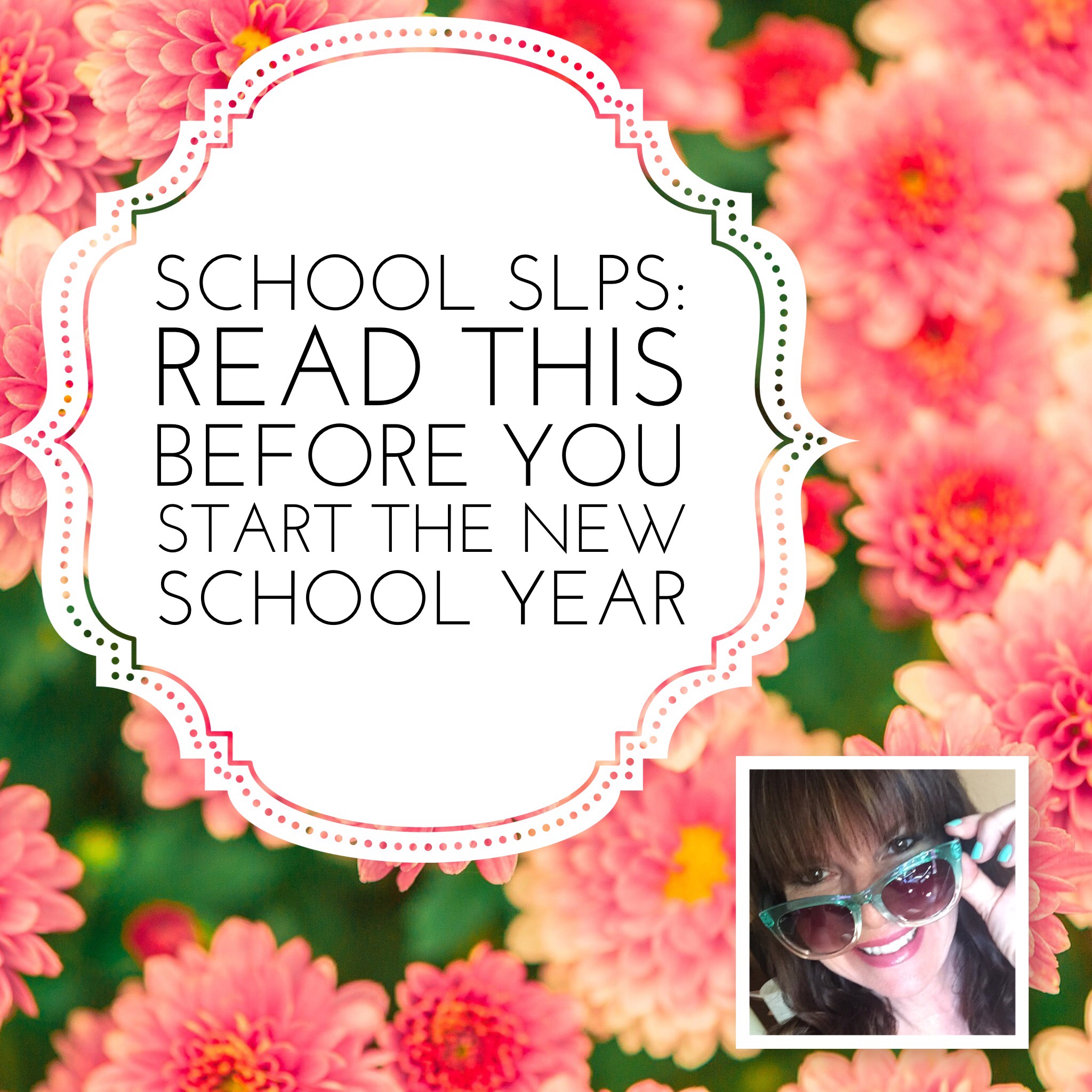
by Anne Page | Jul 6, 2016 | Blog, Inspiration, SLP Like a Boss
What?![spacer height=”20px” id=”2″]
I want you to think about the school year during summer?[spacer height=”20px” id=”2″]
Yes I do. Just hear me out for a minute. Don’t worry, I still want you to enjoy your summer.[spacer height=”20px” id=”2″]
Summer is a time I always look forward to. Two months off to relax, regroup, travel and even do a little planning. Did June fly by for you too?[spacer height=”20px” id=”2″]
However, just taking a little time now to reflect on what worked for you last year will help you continue that trend. Did some new therapy materials get amazing results? Or did you find a new organization tool? You want to keep that good stuff going.[spacer height=”20px” id=”2″]
Take a moment right now. Close your eyes and think about going back to work. What’s the first thing you think of that fills you with dread? Or that gives you that “oh yuck” feeling? You know, that activity that you wish you could pay someone to do for you?[spacer height=”20px” id=”2″]
Really, I’m not trying to bring you down. I’m suggesting you take a look at what you can do to make it better.[spacer height=”20px” id=”2″]
I’ve been chatting with a lot of other SLPs this summer. Here’s a sampling of what some of you said when asked about professional roadblocks:[spacer height=”20px” id=”2″]
“It can get bit crazy with the testing and paperwork that is required. You feel like time is being taken away from your students.”[spacer height=”20px” id=”2″]
“[I have a] hard time finding the balance between paperwork and making sure my kiddos get the attention they need.”[spacer height=”20px” id=”2″]
“…lack of time.”[spacer height=”20px” id=”2″]
Hands down lack of time and too much paperwork were the biggest obstacles.[spacer height=”20px” id=”2″]
I know it can be overwhelming at times. So what I’m suggesting is that you take a little bit of your down time, even if you’re just making some mental notes from your beach blanket, to put some systems into place that will make the coming school year run more smoothly.[spacer height=”20px” id=”2″]
During the next few weeks, we will explore some systems and thought processes that will help you free up your time. So you can get your school year running smoothly and spend more time doing what is really important to you…spending time with your students and making a difference in their lives.[spacer height=”20px” id=”2″]
We’ll explore it all from IEP’s to scheduing to progress reports to billing.[spacer height=”20px” id=”2″]
But for now, let’s start off nice and easy with a thought provoking question…[spacer height=”20px” id=”2″]
What is your why?[spacer height=”20px” id=”2″]
Think back to why you chose to be an SLP. Specifically a school based SLP. What are your top three reasons? Really think about it and dig deep. Don’t let yourself off the hook with “I don’t know”, this is important. Are the reasons still the same? What results do you want? You can do this, it doesn’t need to be perfect; you just need to be clear.[spacer height=”20px” id=”2″]
Here’s my example just to get you started. My top three “why’s” are:[spacer height=”20px” id=”2″]
- Connectedness. Making the world a little better place than when I got here (lofty, I know)
- Independence. (I like having a lot of autonomy to make my own decisions)
- Diversity. I love how diverse the profession is, with the continuous learning curve.
- Honestly, salary and vacation time does have something to do with it; I’m pretty happy with mine, considering the amount of time I have off.
- Creativity/Play. Helping my students learn through play and creativity is another aspect of the job that I really love. [spacer height=”20px” id=”2″]
(I know that’s more than three, I’m having a tough time narrowing it down.)[spacer height=”20px” id=”2″]
So here’s your “homework”… figure out your top three reasons for being an SLP. I’ve created a few fun worksheets for you to help get you started, just click on the image below.[spacer height=”20px” id=”2″]
Stay tuned for next week, when you’ll figure out how to get more of what you want (from your 3 things list) and remove some of the obstacles.[spacer height=”20px” id=”2″]
SLP Like a Boss,[spacer height=”20px” id=”2″]

by Anne Page | Jun 1, 2016 | AAC, SLP Like a Boss, Technology, Uncategorized
Last day of school…ah! Such a great feeling.
That was a week and a half ago. I was end-of-the-year-marathon tired. But now I’m feeling refreshed and re-energized. I want to look back on the school year while it’s still fresh in my mind.

Year End Review Calendar Page
One thing that was really new for me was being the lead for the newly formed Assistive Technology Team for our district. I learned a lot from that and had to push myself to try some things I really wasn’t sure about. Today, I’m sharing three tips for how to AAC Like a Boss, even when you’re a beginner.
TIP #1 You don’t need to know EVERYTHING at first
I learned very quickly just because I’m the lead, it doesn’t mean I have to know everything. I think I had “Imposter Syndrome” for a little while. Have you heard of that? It’s when you think you’ll be exposed as a fraud because you’re just not good enough. Harsh right? Sometimes I’m my own worst critic.
What I figured out is that I don’t have to know everything there is to know about AAC and assistive technology. I don’t have to have all the answers right away, I just need to be willing to find them. Within the online SLP community there are some amazing resources. Dr. Carole Zangari’s award winning blog Praactical AAC is a gold mine of information. Susan Berkowitz at Kidz Learn Language is really helpful with her blog as well. Both of these SLPs truly AAC-like-a-boss and are so forthcoming in helping their fellow SLPs. Another great resource where you can ask specific questions is the Facebook group AAC for the SLP.
TIP #2 Be Resourceful
Working at a Title I district with very limited materials, I have to be extremely resourceful. This year I learned how to adapt toys to be switch activated. These are toys that move and/or sing when you squeeze their paw or hand. Some of our students don’t have the fine motor skills to be able to do this. It was really empowering to make such a fun item accessible for them. I even got to solder. The workshop was put on by our wonderful Arizona Technology Access Program. (You can google to see what programs your state might have.)
I was so happy with the dancing monkey I adapted. Until I got to school the next day and realized we didn’t have any switches that fit him. I figured I’d just buy one. But then I saw the price; $50 for one little switch! Back to the drawing board.

Adapted Switch Toy
Sooooo I signed up for a Make Your Own Switch Workshop. There I was able to make two switches for just $10. We adapted answer buzzers ( 4 for $16.00 at Walmart). The time I spent to adapt two switches was about 90 minutes, the first one took the longest.
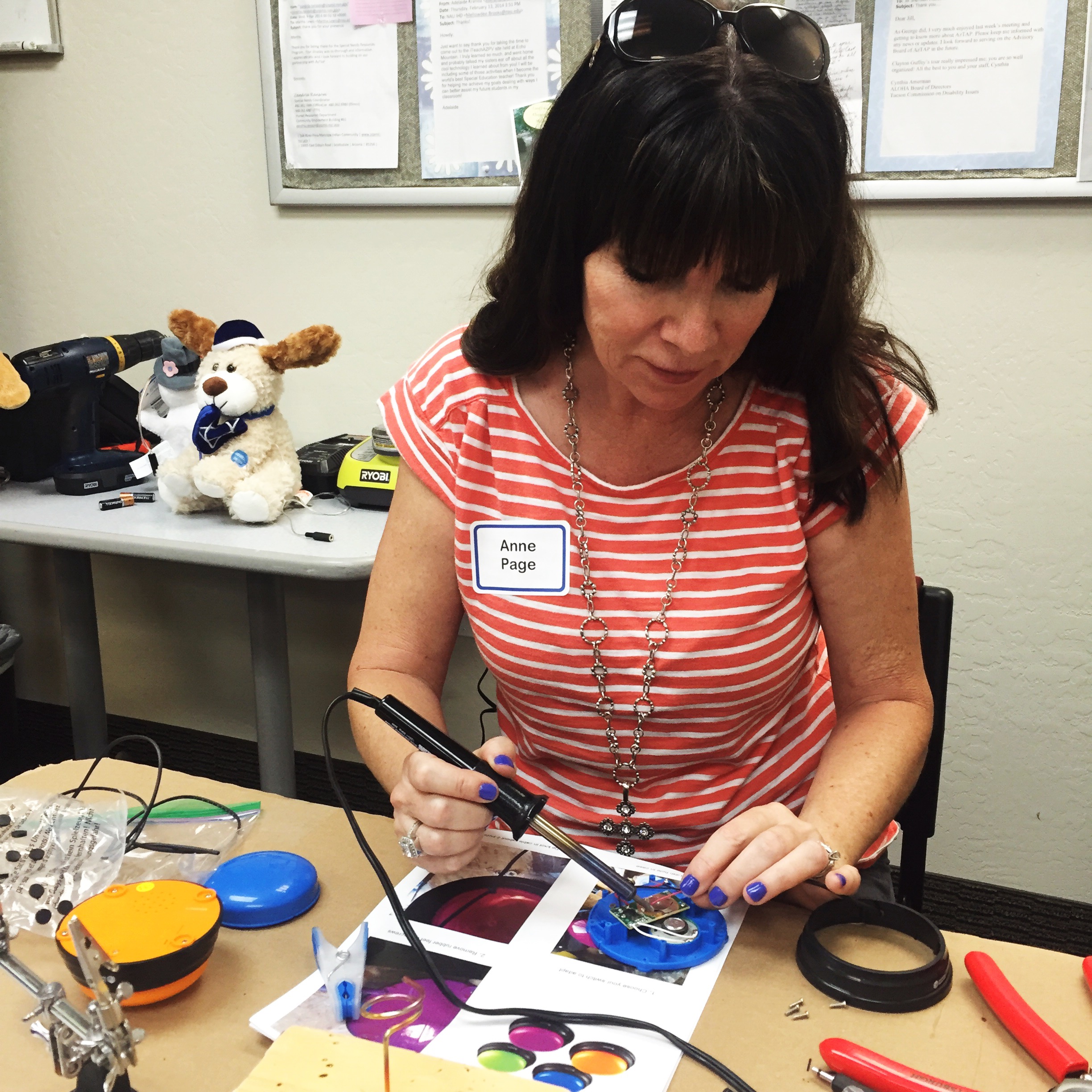
Adapt a Switch
The bonus was sitting next to two parents of children with autism. They were making the switches for their kids. How cool is that? Talking to them in a casual setting about their experiences and expectations was so enlightening. I really got some insight into what they struggle with.
TIP #3 You Don’t Have to Start High Tech
The other thing I learned, in a really fundamental way, is that assistive technology does not need to be high tech at first. It seems that many parents, teachers and staff immediately think “voice activated device” or “get them an iPad”. AND that this technology will magically and immediately give the student language skills the second they receive it. If only!
Students need to learn to label, request, comment, command and greet. A machine can’t teach them these skills, but we can. A voice generating device may be exactly what they need eventually. But sometimes we can’t get one right away. We can still teach them that using symbols(voice activated or pictures) gives them the power to express what they want, when they want.
With many of our students, we started with low tech Core Vocabulary Boards and Go Talk Pages. We could get started right away with these because they’re inexpensive to create and so accessible. It was easier to get “buy-in” from support staff because they saw it working.

Core Vocabulary
We used The Dynamic Learning Map Core Vocabulary; a list of 40 words that have been proven to be most effective socially and academically for students with significant cognitive disabilities. Developed at the Center for Literacy and Disability Studies at The University of North Carolina at Chapel Hill, these 40 words are based on AAC research. I’ll provide a link to more information below. Next week, I’ll talk more about core vocabulary boards and how I used them in group therapy with great success!
In summary, you CAN AAC-Like-a-Boss. Just remember these three tips:
1. You don’t need to know everything.
2. You can be resourceful.
3. It doesn’t have to start out high tech.
I know it can seem scary but we SLPs know language. Remember AAC is just another way to facilitate language.
Whether you are reviewing your year or you’ll be working this summer, I hope you found something helpful here. If you would like a FREE Summer SLP Like a Boss planner to help you with your reflection and planning, click here.
If you are interested in a FREE video tutorial on how to make a switch, let me know in the comments below.
SLP-Like-a-Boss,
Anne
Links: Praactical AAC
KidzLearnLanguage
Dynamic Learning Map Core Vocabulary
How Facebook Can Make You a Better SLP

by Anne Page | May 24, 2016 | Blog, Inspiration, SLP Like a Boss, Uncategorized
What’s SLP Like a Boss? An SLP boss is professional, compassionate, organized and Inspirational with a capital “I”. An SLP boss gets things done! In this series I’m interviewing SLP boss women who work by day as SLPs , but at night (and on weekends) they are business builders, advocates, huggers, tear-wipers, encouragers and creators. These are strong, amazing women that I admire and am happy to call Friend.[spacer height=”20px” id=”2″]
Today our SLP Boss Lady is my friend Sara Wu. I met Sarah in Las Vegas last summer at the Teachers Pay Teachers (TPT) Seller’s Conference. (I met so many great people there.) We also share the blog Speech Spotlight, along with seven other fabulous speech language pathologists.[spacer height=”20px” id=”2″]
Sarah is a powerhouse bilingual SLP. Not only is she bilingual (speaking fluent Spanish), but she has a Chinese last name (Wu), and is a dual citizen(she was born in Australia). Sarah is mother to two young boys and still finds the time to create bilingual therapy materials for her TPT store AND to blog weekly. I love her thought provoking, helpful and insightful blog posts. She writes “evergreen” content that you’ll want to bookmark and share with your friends. I’ll put a link to her blog and TPT store at the end of this post for you.[spacer height=”20px” id=”2″]
I write this series because I feel we can all make our practice as SLPs better and stronger by connecting with other SLPs. It’s also really interesting to see what other SLPs are using in therapy and what advice they have to share.[spacer height=”20px” id=”2″]
So let’s dive in and see what we can learn about Sarah.[spacer height=”20px” id=”2″]
Tell me about yourself in seven words: Joyful, fun, silly, smart, mischievious, mother, and writer.[spacer height=”20px” id=”2″]
Where did you go to grad school?: Northwestern University.[spacer height=”20px” id=”2″]
What are your top three SLP must haves (other than your own amazing materials)?: My clipboard, my laptop, and big foam dice.[spacer height=”20px” id=”2″]
What do you love most about what you do?: Helping my students reach their potential. I think the students I work with have so much potential that’s hard to see. So many of them speak Spanish only and they’re learning English. I work with them exclusively in Spanish until they are ready to move on to English.[spacer height=”20px” id=”2″]
Tell me your advice for the newly minted SLP: It’s important to take risks. I don’t think it’s something women are encouraged to do. Don’t just take the safe path, not just the easiest or the closest. Don’t settle. Do what you have to do to go for it. I’ve always made sure I feel one hundred percent about where I work. If you don’t, it’s worth it to take a leap.[spacer height=”20px” id=”2″]
Tell me about your blog: I like to make sure that it’s useful and important to SLPs. I blog about being bi-lingual. I talk about topics instead of products. [spacer height=”20px” id=”2″]
Tell me about your TPT store: I’m creating the Spanish products I can’t find anywhere else. Sometimes I don’t care for the word choices of commercially produced items. It’s not just Spanish, I have English products too, and bilingual. They’re so much fun to create.[spacer height=”20px” id=”2″]
What SLP-boss inspires you? Natalie Snyders. Her products are very evidence based and well researched. And she has the gift of connecting other SLPs through facebook. My hat is off to her.[spacer height=”20px” id=”2″]
What is your favorite children’s book? Charlotte’s Web[spacer height=”20px” id=”2″]
What about picture books? La Oruga May Hambrienta (The Very Hungry Caterpillar)[spacer height=”20px” id=”2″]
So now you know a little more about one of our fellow SLPeeps and SLP Like a Boss Sara Wu. I hope you feel inspired and connected, I know I do.[spacer height=”20px” id=”2″]
Who inspires you to SLP Like a Boss? Would you like to suggest an SLP for me to interview? Let me know in the comments OR email me at
[email protected].
Until next time,[spacer height=”20px” id=”2″]
Anne
































